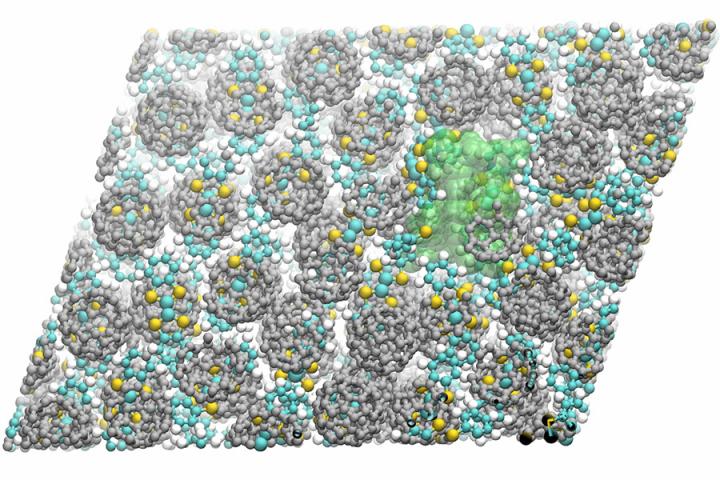

Light causes crystal lattice to swell, opening new possibilities for artificial muscles, tiny electronics.
Credit: Richard Remsing, Ph.D., Temple University
Grow Monsters. Expandable water toys. Whatever you call them, they're plastic-like figurines that swell when placed in water.
New materials science research borrows from this concept; only instead of water, engineers discovered that tiny crystal lattices called “self-assembling molecular nanosheets” expand when exposed to light.
The advancement, described in the Proceedings of the National Academy of Sciences in March, could form the backbone of new light-powered actuators, oscillators and other microscopic electronic components useful in the development of artificial muscles and other soft robotic systems.
The work centers on a materials science concept known as photostriction, which means turning light directly into mechanical motion, says the study's co-lead author Shenqiang Ren, a researcher at the University at Buffalo's RENEW Institute, which works to solve complex environmental problems.
“We're using light — anything from sunlight to a simple laser — to cause the two-dimensional nanosheet to expand at an incredibly fast rate,” he says.
How fast? Sub-milliseconds. The process is aided by the photostrictive effect, which essentially bypasses the need to create electricity to move something, says Ren, PhD, a professor in the Department of Mechanical and Aerospace Engineering in the UB School of Engineering and Applied Sciences.
The nanosheet — made of the molecular charge-transfer compound DBTTF and buckyball molecules) — can expand up to 5.7 percent of its original size, according to the study.
While that may not sound like much, consider this: a 200-pound man that expands 5.7 percent would need to add 11.4 pounds in less than a second to keep pace with the light-triggered nanosheet.
Expandable water toys grow much more than that, but they do not revert to their original size. By contrast, the nanosheet does, making it potentially very useful as a light-induced actuator in artificial muscles, which has applications in everything from medical devices to industrial robotics.
###
The study, which includes contributions from researchers at Temple University and Nanjing University of Science and Technology in China, was supported by grants from the U.S. Department of Energy and the U.S. National Science Foundation.












